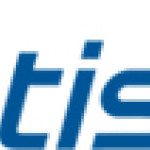- 産業: Telecommunications
- Number of terms: 29235
- Number of blossaries: 0
- Company Profile:
ATIS is the leading technical planning and standards development organization committed to the rapid development of global, market-driven standards for the information, entertainment and communications industry.
Any cable constructed as a ribbon with parallel elements. 2. A fiber optic cable in which the optical fibers are held in grooves and laminated within a flat semirigid strip of material, such as plastic, that positions, holds, and protects them. Note: Ribbon cables may be stacked to produce fiber optic cables with large numbers of fibers. Buffers, strength members, fillers, and jacketing are usually added to produce the final cable.
Industry:Telecommunications
Any call using a single switching facility. 2. Any call for which an additional charge, i.e., toll charge, is not made to the calling or called party. Note: Calls such as those via "800" numbers do not qualify as local calls, because the called party is charged.
Industry:Telecommunications
Any change in frequency. 2. Any change in the frequency of a radio transmitter or oscillator. Note: In the radio regime, frequency shift is also called rf shift. 3. See frequency-shift telegraphy. 4. In facsimile, a frequency modulation system where one frequency represents picture black and another frequency represents picture white. Frequencies between these two limits may represent shades of gray. 5. An intentional frequency change used for modulation purposes.
Industry:Telecommunications
Any change in frequency. 2. Any change in the frequency of a radio transmitter or oscillator. Note: In the radio regime, frequency shift is also called rf shift. 3. See frequency-shift telegraphy. 4. In facsimile, a frequency modulation system where one frequency represents picture black and another frequency represents picture white. Frequencies between these two limits may represent shades of gray. 5. An intentional frequency change used for modulation purposes.
Industry:Telecommunications
Any common carrier network that provides circuit switching among public users. Note: The term is usually applied to public switched telephone networks, but it could be applied more generally to other switched networks, e.g., packet-switched public data networks. 2. A switched network accessible by the public for the purpose of originating and terminating telecommunications messages. 3. Any common carrier switched network, whether by wire or radio, including local exchange carriers, interexchange carriers, and mobile service providers, that use the North American Numbering Plan in connection with the provision of switched services.
Industry:Telecommunications
Any communications system, or portion thereof, that automatically uses feedback information obtained from the system itself or from the signals carried by the system to modify dynamically one or more of the system operational parameters to improve system performance or to resist degradation. Note: The modification of a system parameter may be discrete, as in hard-switched diversity reception, or may be continuous, as in a predetection combining algorithm.
Industry:Telecommunications
Any component of a communication cable, metallic or optical, the function of which is to protect the transport medium, i.e., conductor or fiber, from excessive tensile and bending stresses during installation and while in service.
Industry:Telecommunications
Any computer software program for reading hypertext. Note 1: Browsers are usually associated with the Internet and the World Wide Web (WWW. ) Note 2: A browser may be able to access information in many formats, and through different services including HTTP and FTP.
Industry:Telecommunications
Any conductor that may provide an unintended path for signals. Note: Examples of fortuitous conductors are water pipes, wires, cables, and metal building and equipment structural members.
Industry:Telecommunications
Any cryptographic system in which arbitrary symbols, or groups of symbols, represent units of plain text or in which units of plain text are rearranged, or both. 2. The result of using a cipher. Note: An example of a cipher is an enciphered message or text.
Industry:Telecommunications
